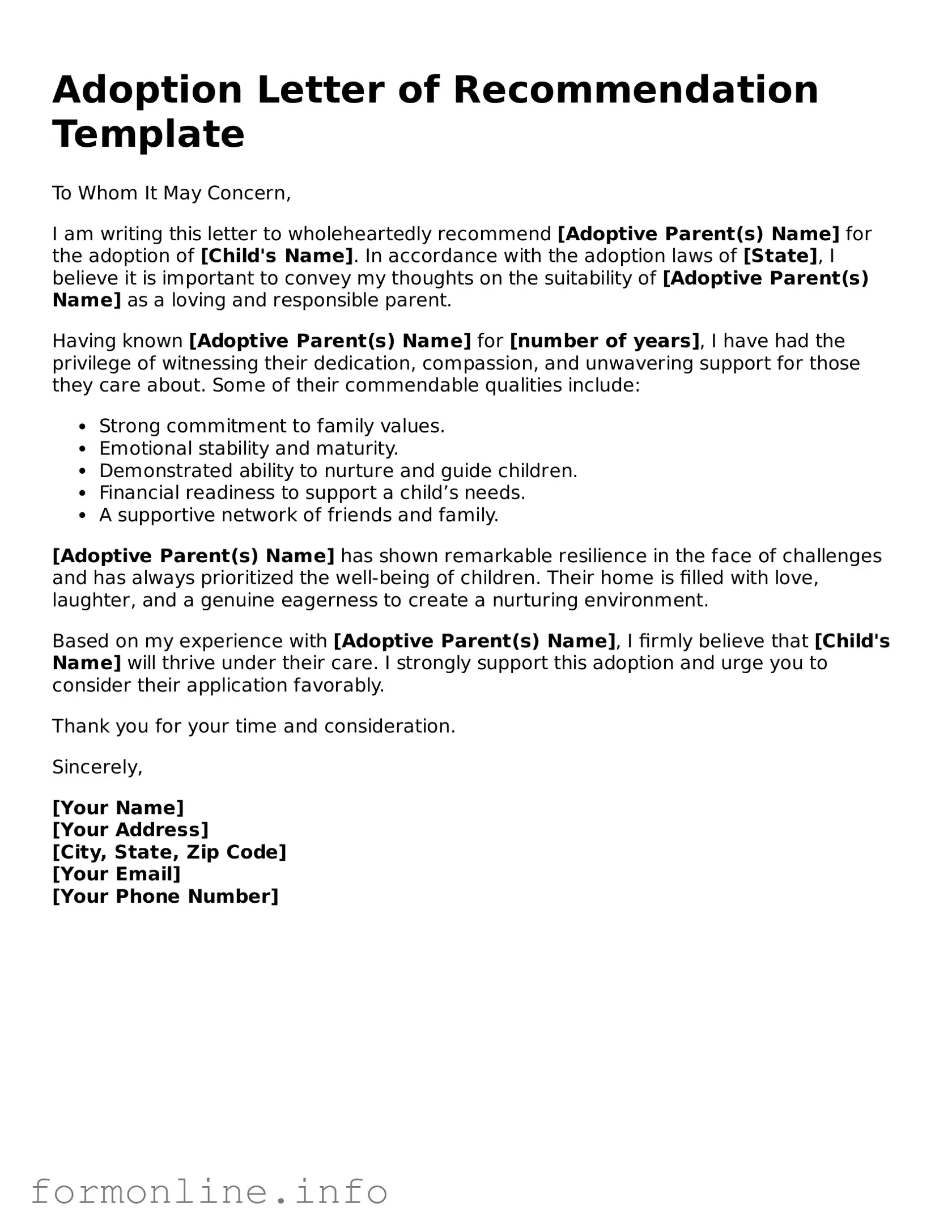The Adoption Letter of Recommendation form shares similarities with a character reference letter. Both documents serve to provide insight into an individual's character and suitability for a specific role or responsibility. In the context of adoption, a character reference letter may be written by a friend, colleague, or community member who can attest to the prospective parent's qualities. Like the Adoption Letter of Recommendation, this letter aims to support the applicant's case by highlighting their strengths, values, and ability to provide a nurturing environment for a child.
Another document akin to the Adoption Letter of Recommendation is the employment reference letter. This letter is typically provided by a former employer or supervisor to vouch for an individual's professional capabilities and work ethic. Similar to the adoption recommendation, it emphasizes the individual's reliability, commitment, and interpersonal skills. Both documents aim to assure the reader of the applicant's ability to fulfill responsibilities, whether in a professional setting or as a parent.
The personal statement is also comparable to the Adoption Letter of Recommendation. A personal statement allows individuals to express their motivations, experiences, and aspirations in a narrative format. In the case of adoption, this statement can complement the recommendation by providing a deeper understanding of the applicant's journey and commitment to becoming a parent. Both documents aim to present a holistic view of the individual, helping decision-makers assess their readiness for the responsibilities ahead.
Understanding the process of obtaining a Character Reference Letter for Child Custody Support can be pivotal for parents navigating custody arrangements. This documentation not only showcases the parent's qualities but also helps reinforce their commitment to their child's well-being.
Letters of support, often used in various applications, share common ground with the Adoption Letter of Recommendation. These letters are typically written by individuals who wish to endorse someone’s candidacy for a specific purpose, such as community service or scholarship applications. They highlight the applicant's positive attributes and contributions to the community. In the adoption context, letters of support can reinforce the recommendation by showcasing the applicant's involvement and dedication to fostering a loving environment for a child.
Similarly, the guardianship letter serves a related purpose. This document is often created when an individual seeks to establish legal guardianship over a minor. It includes statements about the guardian's ability to provide care and support. Like the Adoption Letter of Recommendation, it emphasizes the guardian's commitment to the child's welfare, thus serving as a critical endorsement of their suitability for the role.
Another document that parallels the Adoption Letter of Recommendation is the school recommendation letter. This letter is typically written by teachers or school administrators to support a student's application for a special program or scholarship. It highlights the student's strengths, achievements, and character traits. In the context of adoption, while the focus shifts from a student to a parent, both documents aim to provide a well-rounded view of an individual's capabilities and potential to nurture and support others.
Finally, the reference letter for volunteer work is similar in intent and structure. These letters are provided by organizations where an individual has volunteered, emphasizing their dedication, skills, and impact on the community. Much like the Adoption Letter of Recommendation, this document seeks to validate the individual's ability to contribute positively to the lives of others. Both types of letters serve to assure decision-makers of the applicant's commitment to service and care, whether in a volunteer capacity or as a parent.
